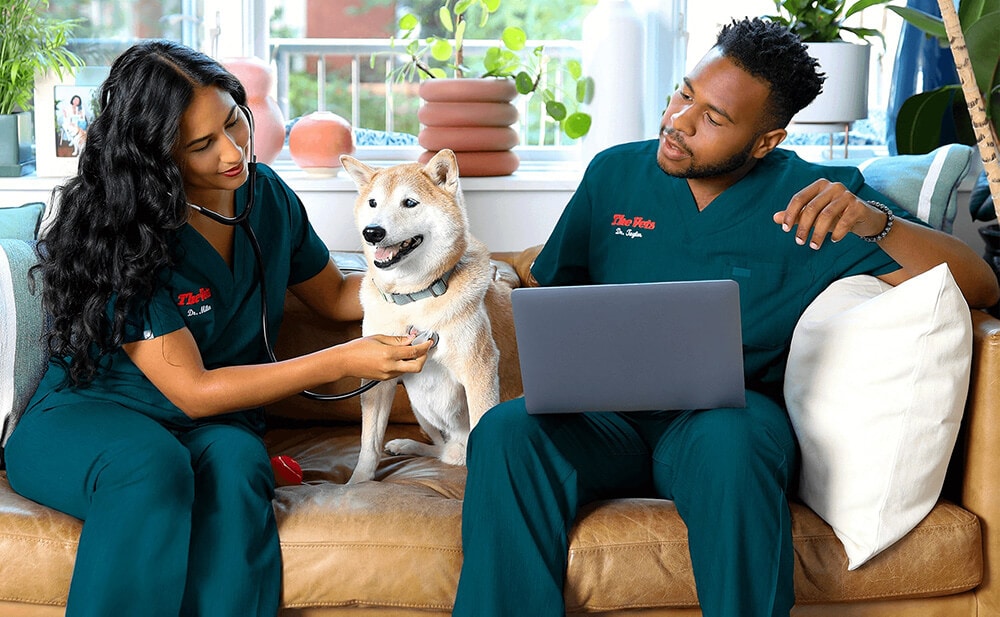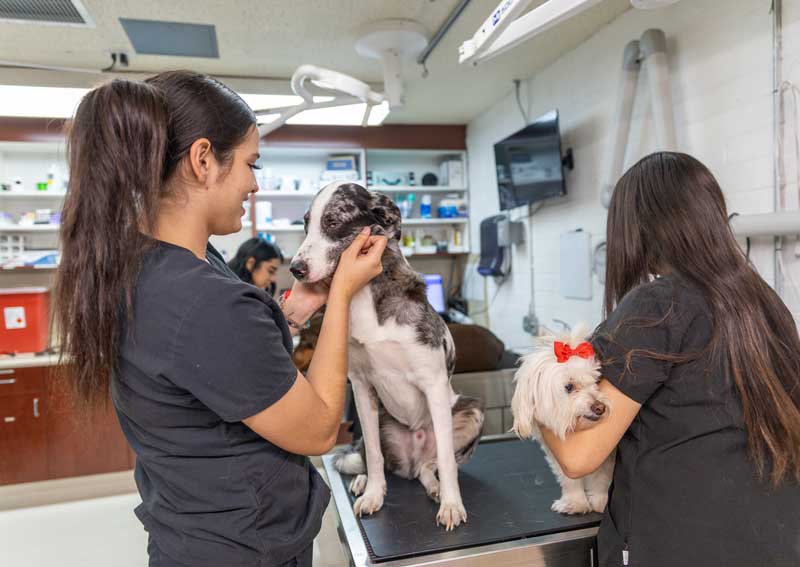Common Pet Injuries That Require an Immediate Visit to an emergency vet bellingham
Common Pet Injuries That Require an Immediate Visit to an emergency vet bellingham
Blog Article
Everything About Vet Surgery: Recognizing the Significance of Expert Look After Your Family pets
Veterinary surgery is an essential component of pet dog medical care. It incorporates different procedures, from routine optional surgical procedures to urgent treatments. Comprehending the ins and outs of these surgical treatments can aid pet dog owners make informed decisions. The prep work, execution, and recovery phases are crucial for making sure the wellness of pets. With correct expertise, proprietors can navigate the intricacies of veterinary care. What variables should be thought about before a pet dog undergoes surgical treatment?
Types of Veterinarian Surgeries
When a pet dog requires surgical intervention, understanding the numerous types of veterinarian surgical procedures can help family pet proprietors make informed choices. Vet surgeries can be generally categorized right into three primary types: optional, urgent, and emergency situation surgical treatments. Elective surgical procedures, such as spaying or neutering, are planned procedures that are not quickly deadly. Immediate surgical procedures, like those for international body elimination, must be carried out quickly yet are not serious in the moment. Emergency surgical treatments, such as those attending to serious trauma or internal bleeding, are crucial and need immediate attention.Additionally, surgeries can vary in complexity, varying from minimally invasive laparoscopic procedures to much more considerable open surgical treatments. Each sort of surgical treatment brings its own threats and recovery procedures. Recognizing these classifications permits pet proprietors to take part in significant discussions with veterinarians, causing better outcomes for their precious pet dogs.
Planning for Your Family pet's Surgical procedure
Preparing for an animal's surgical treatment involves an extensive checklist to guarantee all basics are covered. Efficient communication with the veterinarian is important for comprehending the treatment and any kind of needed pre-operative actions - 24 hour vet near me. In addition, having clear post-operative care instructions will assist proprietors offer the most effective assistance for their recovering family pets
Pre-Surgery Checklist Essentials
Assuring a smooth medical experience for an animal calls for cautious preparation and interest to detail. A pre-surgery checklist is crucial for pet dog proprietors to follow. Confirming the arranged surgical procedure date and time is vital. Owners need to additionally confirm that their family pet has actually fasted according to the veterinarian's guidelines, usually for 8-12 hours before surgical procedure. Gathering needed clinical records, consisting of vaccination background, is essential for the veterinarian's testimonial. It is additionally a good idea to prepare a comfy space in the house for the pet dog's recovery after surgical procedure. Finally, proprietors need to have a strategy for transport to and from the vet facility, seeing to it that the pet dog is safe and comfortable throughout the trip. Adhering to these steps can significantly boost the surgical experience.
Connecting With Your Vet

Efficient communication with the vet is necessary for an effective medical experience for pets. Owners must be prepared to review their family pet's case history, including any type of pre-existing conditions, medications, and allergies. This information aids the vet evaluate risks and customize the surgical plan accordingly. In addition, pet proprietors need to ask questions regarding the procedure, anesthetic, and expected results to guarantee they fully recognize the procedure. Clearing up any kind of questions can relieve stress and anxiety for both the pet dog and the owner. It is additionally crucial to communicate any type of behavioral adjustments or concerns observed in the pet dog leading up to the surgical procedure. Inevitably, clear dialogue promotes count on and collaboration, guaranteeing that animals get the very best feasible care during their surgical trip.
Post-Operative Care Directions
After discussing the procedure with the vet, pet owners should concentrate on post-operative care instructions to assist in a smooth healing for their animals. These directions typically include checking the surgical website for indicators of infection, such as redness or discharge. Animals may need to be kept one's cool and confined to stop excessive motion that could interfere with recovery. Discomfort administration is essential, so proprietors should follow the vet's advice on carrying out medications. Furthermore, dietary restrictions might be suggested to prevent stomach upset. Regular follow-up visits are necessary to assure correct recovery and deal with any kind of worries. By sticking to these post-operative treatment directions, pet owners can greatly add to their pet dog's healing and total health.
The Surgery Explained
The surgery for pets incorporates important steps that assure their safety and security and recuperation. Pre-surgery preparations are essential for decreasing threats, while post-operative treatment guidelines play a vital role in advertising healing. Comprehending these elements aids animal owners browse the surgical experience more efficiently.
Pre-Surgery Preparations
Prior to a pet dog goes through surgery, a number of vital preparations have to take location to ensure a safe and effective treatment. A thorough veterinary exam is important to analyze the pet dog's overall health and recognize any kind of potential threats. This may include blood examinations, imaging, or various other diagnostics. The veterinarian will certainly also review anesthesia options customized to the pet's certain needs. Furthermore, family pet owners are normally advised to hold back food and water for a specified time before surgery to lessen the danger of complications throughout anesthesia. It is essential for owners to give a complete clinical background, consisting of any medications or allergic reactions, making sure the surgical team vet and dog has all essential info. Appropriate communication and adherence to pre-surgery guidelines can substantially improve the result of the treatment.
Post-Operative Treatment Guidelines
Appropriate post-operative treatment is essential for guaranteeing a family pet's healing adhering to surgical treatment. After the treatment, animals need to be monitored very closely for any kind of indicators of difficulties, such as too much blood loss, swelling, or uncommon behavior. It is essential to adhere to the veterinarian's instructions relating to medications, including painkiller and anti-biotics. Pets should be kept in a peaceful, comfy environment to minimize anxiety and promote healing. Restricting activity is crucial; short, leashed strolls might be necessary, but leaping or running ought to be prevented. Normal follow-up appointments need to be scheduled to analyze the recovery procedure. In addition, the surgical site needs to be maintained clean and completely dry, with any kind of signs of infection reported to a veterinarian without delay. Abiding by these standards boosts recuperation end results.
Anesthesia and Discomfort Administration
Reliable anesthetic and pain administration are vital components of vet surgical procedure, ensuring that pet dogs remain comfortable and risk-free throughout the treatment. Vets examine each pet's specific demands, taking into consideration variables such as age, weight, health status, and the kind of surgical procedure being performed.Anesthesia protocols commonly consist of a mix of pre-anesthetic medications, induction agents, and inhalant anesthetics, permitting precise control over the pet's level of consciousness. Tracking during surgery is critical; vets constantly observe vital indicators to resolve any possible issues promptly.Pain monitoring techniques may involve opioids, non-steroidal anti-inflammatory drugs (NSAIDs), and anesthetics, customized to the animal's specific circumstance. This complex approach aids decrease discomfort and advertises a smoother surgical experience. By focusing on effective anesthesia and discomfort administration, veterinary professionals improve the general well-being of family pets undergoing operations, ensuring they get the highest criterion of treatment.
Post-Operative Care and Recovery
Following surgery, the focus moves to post-operative treatment and recovery, which is important for guaranteeing a pet's risk-free return to normal activities. Throughout this period, pet dogs need a peaceful, comfy atmosphere to aid recovery. Owners should closely check their animals for any kind of indicators of pain or unusual behavior.Veterinary guidelines usually include certain instructions connected to drug administration, wound treatment, and nutritional changes. It is important to stick to these suggestions to reduce difficulties and advertise recovery. Pet dogs may require to be restricted from vigorous tasks, such as running or jumping, throughout their recuperation period (tplo surgery).Regular follow-up consultations with the vet permit tracking of the family pet's progression and prompt modifications to the care strategy. Supplying psychological support and friendship can likewise improve a family pet's recuperation experience, aiding to alleviate stress and anxiety. On the whole, thorough post-operative treatment plays a considerable function in accomplishing an effective recuperation
Identifying Issues After Surgical Procedure
Exactly how can animal owners recognize difficulties after surgical treatment? Recognition of particular signs is important for making sure the wellness of pet dogs during recuperation. Common indicators consist of too much swelling, soreness, or discharge at the surgical website, which may signify infection. In addition, consistent pain, shown by yawping or hesitation to move, need to prompt instant attention. Changes in hunger or water consumption can also indicate problems; a decrease in these actions may indicate discomfort or distress.Moreover, pet proprietors should monitor their pet dogs for any unusual actions, such as lethargy or trouble breathing, as these can be signs of major issues. Vomiting or looseness of the bowels adhering to surgical procedure may require urgent vet assessment. Acknowledging these difficulties early can significantly influence a family pet's recovery process, highlighting the value of watchfulness and prompt interaction with a veterinarian for any worrying symptoms.
The Role of Veterinary Professionals in Surgical Treatment
Vet specialists play a vital duty in guaranteeing the safety and success of operations for pet dogs, especially adhering to surgical procedure when keeping an eye on and care are vital. These experts include veterinarians, vet technicians, and support personnel, all of whom add specialized skills to the surgical process.Before surgery, veterinarians perform extensive assessments to analyze the pet's wellness, ensuring that any kind of underlying conditions are taken care of. During the procedure, the medical team provides anesthetic, maintains clean and sterile settings, and keeps an eye on key indications, all crucial for minimizing risks.Post-operative treatment is equally considerable; veterinary experts observe for issues, handle discomfort, and guide proprietors on recovery methods. Their experience enables them to recognize very early signs of distress or infection, guaranteeing prompt treatment. Ultimately, the collective initiatives of vet professionals in medical treatment promote a secure environment, advertising the health of pet dogs throughout the surgical trip.

Often Asked Inquiries
How Do I Pick the Right Veterinary Surgeon for My Pet dog?
Selecting the ideal vet specialist involves looking into qualifications, reading testimonials, and assessing the clinic's atmosphere. It is vital to reflect on the specialist's experience with details treatments and their interaction design when making a decision.
What Are Common Misconceptions Concerning Vet Surgeries?
Common mistaken beliefs concerning veterinarian surgical procedures consist of ideas that they are always dangerous, unneeded, or for emergency situations. Many pet dog proprietors take too lightly the advantages of preventative procedures and the skill associated with veterinary medical treatment.
Exactly How Much Will My Animal's Surgical procedure Price?
The expense of a pet's surgery can vary significantly based upon aspects such as the type of treatment, the vet's experience, and geographic location (tplo surgery for dogs). Generally, expenditures range from a few hundred to several thousand bucks

Can My Family Pet Eat Prior To Surgical Procedure?
Before surgical treatment, it is normally encouraged that animals avoid from eating for a details duration. This fasting helps in reducing the risk of complications throughout anesthesia. Proprietors ought to consult their vet for exact guidelines tailored to their pet dog's needs.
Suppose My Animal Has Pre-Existing Health Issues?
When an animal has pre-existing health and wellness conditions, it's crucial for the vet to assess these factors before surgical treatment. This evaluation guarantees proper precautions are taken, decreasing threats and enhancing the pet dog's total security throughout the treatment.
Report this page